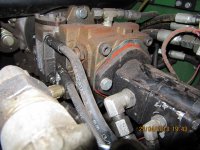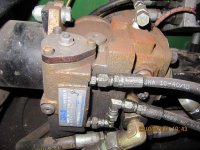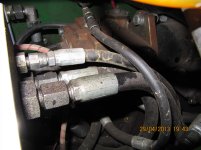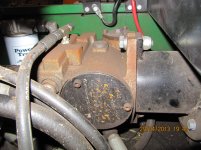fnoergaard
New member
Hi again,
I've changed the hydraulic filter on my PT-425, and need to bleed the air out of the hydraulic pump.
It's a Bondioli&Pavesi model HP P2. I can't find the air bleed port.
I've tried the owners manual, but it's useless, as it describes another pump.
Also I've searched this forum, but none of the discussions seems to relate to my pump.
Some posts mentions a hydraulic hose used for bleeding air, which was supplied by Power Trac with the tractor. I did not get a hose when I bought my 425 - can I bleed it without one?
Any help will be greatly appreciated.




I've changed the hydraulic filter on my PT-425, and need to bleed the air out of the hydraulic pump.
It's a Bondioli&Pavesi model HP P2. I can't find the air bleed port.
I've tried the owners manual, but it's useless, as it describes another pump.
Also I've searched this forum, but none of the discussions seems to relate to my pump.
Some posts mentions a hydraulic hose used for bleeding air, which was supplied by Power Trac with the tractor. I did not get a hose when I bought my 425 - can I bleed it without one?
Any help will be greatly appreciated.



